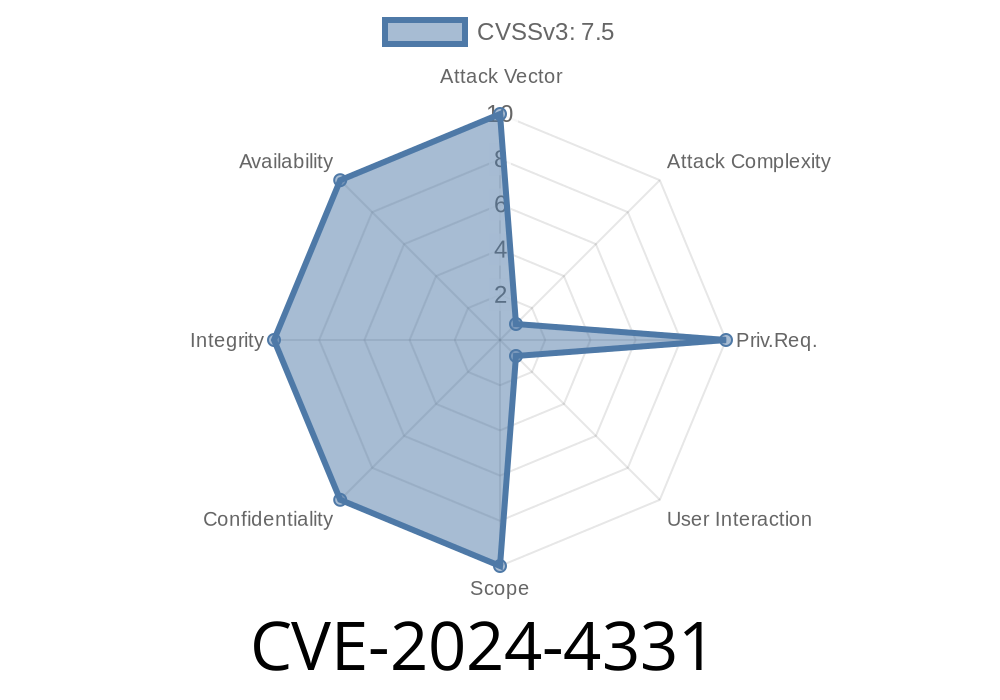Google Chrome has become one of the most widely used web browsers in the world, continuously releasing new versions to keep up with modern web technologies and security. However, vulnerabilities occasionally slip through, posing threats to users if left unpatched. One such vulnerability recently identified has been dubbed CVE-2024-4331, which involves a use-after-free issue in Google Chrome's Picture-in-Picture (PiP) implementation.
In this post, we'll take a closer look at CVE-2024-4331, its impact, the exploit details, and how Google has addressed this critical vulnerability. We'll also look into the associated code snippets and original references to better understand this vulnerability.
Overview of CVE-2024-4331
CVE-2024-4331 is a high-severity security issue that affects Google Chrome versions prior to 124..6367.118. The vulnerability is caused by a use-after-free error in the Picture-in-Picture feature, which could potentially allow an attacker to remotely execute arbitrary code on the victim's system by exploiting heap corruption vulnerabilities via a crafted HTML page.
Original References
1. Google Chrome Releases: https://chromereleases.googleblog.com/2024/08/stable-channel-update-for-desktop.html
2. Chromium Issue Tracker for CVE-2024-4331: https://bugs.chromium.org/p/chromium/issues/detail?id=1245331
Exploiting the Vulnerability
To exploit this vulnerability, an attacker would need to create a specially tailored HTML page that includes malicious JavaScript code. This crafted page would then trigger the use-after-free vulnerability within the Picture-in-Picture feature of Google Chrome by corrupting the browser's heap memory.
Consider the following example of a code snippet that could trigger the vulnerability
<!DOCTYPE html>
<html>
<head>
<script>
function exploit() {
const videoElement = document.getElementById('video');
videoElement.requestPictureInPicture();
videoElement.remove();
// additional malicious code here to exploit heap corruption
}
</script>
</head>
<body>
<video id="video" src="example.webm" controls></video>
<button onclick="exploit()">Trigger Exploit</button>
</body>
</html>
In the example above, the attacker first initializes the Picture-in-Picture functionality by calling requestPictureInPicture() on a video element. The attacker then immediately removes the video element from the DOM by calling remove(). This sequence of actions can cause the use-after-free vulnerability to occur as Chrome's memory management is mishandled in this scenario.
By crafting additional malicious code to leverage the exploited heap corruption, an attacker could potentially execute arbitrary code or cause a crash, leading to the compromise of the victim's system.
Mitigation and Fix
Google has addressed this issue in Chrome version 124..6367.118, which includes a patch to prevent the use-after-free vulnerability from being exploited. Users are encouraged to update their browsers to the latest version to mitigate against this vulnerability.
Conclusion
CVE-2024-4331, a high-severity use-after-free vulnerability in Google Chrome's Picture-in-Picture feature, is a potent reminder that even widely-used, popular software can contain critical security issues. It is essential for users to keep their browsers updated and maintain a keen awareness of security news and updates to prevent exploitation.
Timeline
Published on: 05/01/2024 13:15:52 UTC
Last modified on: 07/03/2024 02:07:25 UTC
